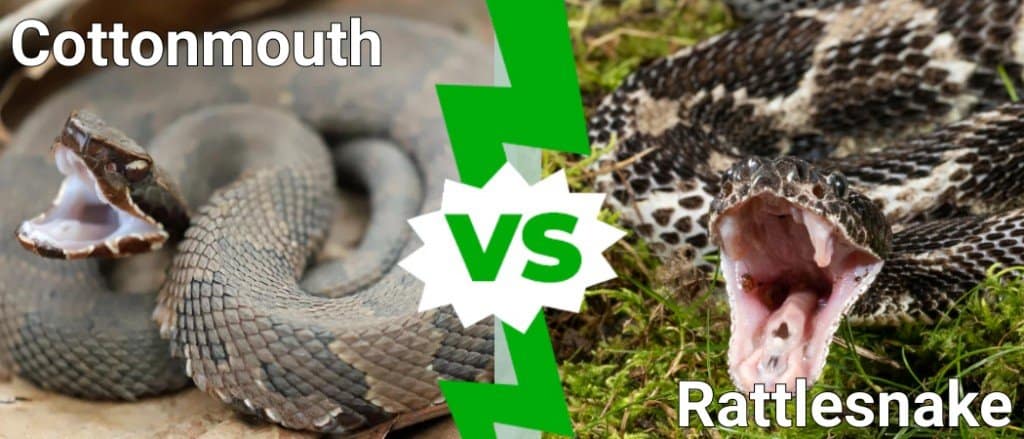Continue reading for our analysis...

A group of hunters goes out to take some javelinas in Texas. Little do they know, they’re about to witness one of the coolest trick shots caught on camera. In a shot that seems to belong in an action movie, one of the hunters nails two rattlesnakes with a single arrow.
Before we get to that incredible shot, the video starts with the hunters talking about their goals for the day. They focus on javelinas, which look like pigs or wild boars but are medium-sized mammals belonging to the Tayassuidae family. They can take at least two javelinas, the legal maximum they can kill per license year in Texas.
One of the hunters aims with his bow and shoots an arrow that hits one of the mammals right where its legs meet the body. The javelina doesn’t last too long before it keels over from the wound. One of the hunters inspects the creature, showcasing its teeth. The rest of the hunters join the first, and they decide to go looking for others. The group of guys piles into their vehicle and searches out new opportunities to test their skills.
Suddenly, they spot another group of javelinas that runs into some tall brush. One of the hunters chases them. As one hunter says, he’s not from a place where large venomous snakes live. He wasn’t aware that charging headlong into tall grass could put him way too close to an angry rattlesnake. Fortunately, only javelinas were in the brush.
A Close Encounter With Two Rattlesnakes

A hunter was able to take out not one but two rattlesnakes with a single shot.
©Alexander Wong/Shutterstock.com
The hunter moves into the brush with a cameraman following him. He lines up another shot at a fleeing javelina and kills it from about 30 yards away. Having reached his maximum kill number, the hunters get back in their vehicle and move on. That’s when they spot an unusual sight: two rattlesnakes that have pulled several feet of their bodies off the ground, in what the hunter thinks may be a mating dance but is more likely fighting.
When two male rattlesnakes battle over a female it looks like a complex wrestling match, with each raising their body up and actively trying to topple the other over to gain dominance. During courtship, the male and female are both on the ground, with the active male rubbing his face on the body of the female, who is more passive in the process.
These two large rattlesnakes are too busy to notice the hunter getting close and lining up a shot. The snakes continue to “stand” and whirl around each other. The hunter waits for the two snakes to get close together and lets an arrow fly. It hits the dirt, missing the snakes. He lines up another shot and looses the arrow.
This time, the arrow goes through both snakes and pins them together. Both rattlesnakes are clearly upset, rattling and snapping at each other. The hunter waits for them to die from their wounds and lines them up for viewing.
Where Do Rattlesnakes Live?
These two snakes were found in the south of Texas. Rattlesnakes are native to the U.S., which has 32 species, with the biggest concentration in the southwestern states and northern Mexico.
Many live in the Southwest’s desert sands and dry climate but can do well in other environments including grassy regions, rocky hills, swamplands, and at high elevations.
There are 10 species of rattlesnakes in Texas, the second-highest behind Arizona, which has 13 species. You can find the western diamondback rattlesnake, timber rattlesnake, black-tailed rattlesnake, and Mojave Rattlesnake in Texas. Check out the full list of rattlesnakes in the state here.
As rattlers prefer warm, sunny weather, they can be anywhere in Texas, from rocky desert canyons to people’s backyards. They live in dens within rocky crevices and hibernate in these during winter.
How Long Do Rattlesnakes Live For?
Rattlesnakes can live in the wild for 10 to 25 years. In captivity, their lifespan is generally longer, from 15 to 30 years.
The biggest threat to these snakes is humans killing them often out of fear and developing land that leads to habitat loss, reducing food sources and areas to create dens to hibernate in.
In the wild, the snakes can become prey for bigger snakes and animals including owls, eagles, hawks, roadrunners, coyotes, bobcats, and foxes. Colder temperatures and reduced sunshine can create a problem for these reptiles, which need to thermoregulate.
Rattlesnake vs Cottonmouth
Another snake that hunters in Texas come across is the cottonmouth. As well as sharing the same habitat, these snake species have a lot in common and it can be easy to confuse the two. They are both pit vipers with similar physical characteristics, including a venomous bite and thick bodies.
Cottonmouths are typically smaller at 2-6 feet long than rattlesnakes, which grow 1-8 feet. They also have shorter lifespans, with cottonmouths living less than 10 years compared to rattlers, which generally live 10-25 years. While rattlesnakes prefer to remain on land and only swim if necessary, cottonmouths like living in aquatic areas. The main difference of course is the rattlesnake’s distinctive rattle at the end of their tails that they use to ward off predators. Read more about the differences between the two here.

Rattlesnakes can be legally collected with a hunting license in Texas, but next time this hunter might be more careful when hunting in the state. After all, rattlesnake bites can be serious business. Small variations in rattlesnake venoms can have an impact on the outcomes of anti-venom treatments following a bite.
For now, though, the hunter can rest on his laurels. He took an amazing, Hawkeye-like shot and nailed two rattlesnakes with a single arrow!
Discover the "Monster" Snake 5X Bigger than an Anaconda
Every day A-Z Animals sends out some of the most incredible facts in the world from our free newsletter. Want to discover the 10 most beautiful snakes in the world, a "snake island" where you're never more than 3 feet from danger, or a "monster" snake 5X larger than an anaconda? Then sign up right now and you'll start receiving our daily newsletter absolutely free.
Thank you for reading! Have some feedback for us? Contact the AZ Animals editorial team.






